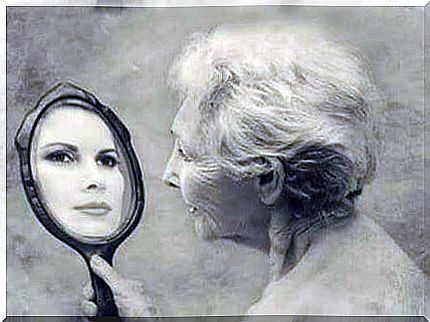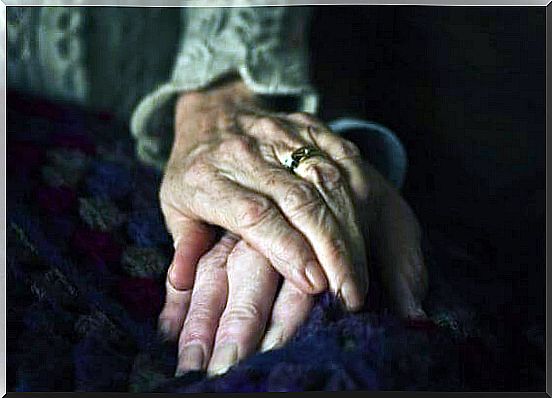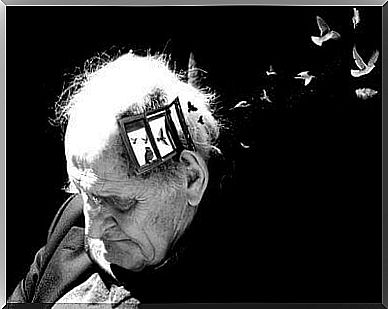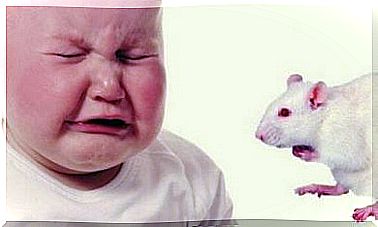Dementia Has Many Faces

Dementia has many faces, many ways to teach us how horrible forgetfulness is. Traditionally, the most well-known type of dementia is Alzheimer’s dementia, but it is not the only one that exists. Still, it is the most common.
Contrary to popular belief, not all types of dementia are irreversible. In some cases, if the cause is determined, it can even be treated and corrected. Some cases include: dementia due to B12 deficiency, caused by vasculitis, hypothyroidism or hydrocephalus, among others.
Currently, all types of dementia are included in the DSM-5 in cognitive disorders. They are classified along with delirium, amnestic disorders and other cognitive disorders. These disorders are those where the cognitive loss or impact has not been present since birth or early childhood. Therefore, there is a decline, visible if we compare the current level of performance with a previous one.

Alzheimer’s type dementia
It consists of a degenerative cerebral disease whose causes are unknown. The eruption tends to be gradual, and it involves a continuous, slow and progressive worsening. This type of dementia usually has an average duration of 8-10 years. Currently, this disease has no cure. Three phases can be distinguished:
The initial phase (approx. 2-4 years):
Its onset is usually sudden, and its main characteristic is a deterioration of recent memory. This is the part of memory that refers to what is happening in the present moment. That is, they will have difficulty remembering daily tasks and learning.
When it comes to language, it is common for the individual to lose wealth in the vocabulary. Because they will find it difficult to find the words (anomia) that they then try to solve by using periphrases (talking about the topic) and rewriting. Rewriting consists of substituting one word for another in a similar context.
Also changes in personality can occur, such as apathy (which is general laziness or lack of interest), irritability, aggression, stiffness, etc. Stiffness is understood as the inability to think flexibly. That is, they become obsessed with an idea. No matter how much you try to reason with them, the idea does not change.
There may also be some affective changes, such as anxiety or depression. Because they are often aware of the onset of the disease, especially because they notice their own memory problems. In these cases , individuals and their family members must adapt to a new lifestyle. And this is a challenge that involves stress and a lot of pain.

Second phase (approx. 3-5 years):
The intellectual deterioration continues, and aphasic-apraxia-agnostic syndrome appears. This results in frequent forgetfulness, difficulty in realizing simple tasks such as getting dressed or washing up and difficulty in recognizing family members and objects. This syndrome necessitates supervision.
Retrograde amnesia also appears. That is, an inability to remember events from the past. These people tend to try to hide this by confabulating. This consists of creating events that have not happened to fill in the blanks in their memory. Yet individuals do so without the intention of lying.
Their rating is deteriorating. They become more impulsive and no longer distinguish directly from mistakes, nor what kind of behavior is acceptable privately or publicly, etc. Their ability to think abstractly also deteriorates, resulting in a loss of problem-solving ability and task planning.
The rest of the symptomatology worsens and psychotic symptoms may occur. Hallucinations, such as saying that they have spent time with their mother when she has been dead for many years. Or delusions, such as saying that things are stolen from them, when in fact they just lose or rotate them away.
In this phase, they no longer know how to orient themselves in time (hour, day, month or year they are in), nor in the room (where they live, different rooms in the house, etc.). A person suffering from Alzheimer’s type dementia is currently unable to survive without supervision. They require supervision, although they can perform basic daily tasks themselves.
Third phase (variable duration):
In this phase, the person does not recognize themselves in the mirror, because they think they are younger than the person they see in the reflection. Nor do they recognize the closest people in their lives. Their language gradually slows down, and they gradually become dumb.
Serious changes in the hallway occur. For example, walking with very short steps and shuffling or dragging the feet is most characteristic. This can possibly give the opportunity to stumble and fall, resulting in gait apraxia (inability to walk because they have forgotten how to do it). In this phase, the patient will require help to perform virtually all activities. They usually end up lying in bed.

Dementia with Lewy bodies
Dementia with Lewy bodies is one of the most difficult types to distinguish, as well as being one of the last to be discovered. This is because it has some common symptoms with Alzheimer’s type dementia and Parkinson’s dementia. Thus, it tends to be confused with some of these. It is currently considered the second most common type.
Therefore, its symptoms are mainly the following:
- Aphasic-apraxia-agnostic syndrome: It is characteristic of dementia of the Alzheimer’s type, which consists of frequent forgetfulness, difficulty in performing simple tasks and difficulty in recognizing family members or objects. In this case, it is characterized by pronounced variations in attention and alertness.
- Repeated complex visual hallucinations: as well as auditory hallucinations and delusions. Symptoms associated with REM sleep disorders are very common (which can be a very early manifestation), as well as hallucinations of other types of sensory modalities, depression and delusions.
- Parkinson’s symptoms: as in Parkinson’s disease, which includes tremors and stiffness in the extremities.
Spontaneous Parkinson’s symptoms should start after the onset of cognitive decline. The major neurocognitive defects will appear at least one year before motor symptoms. It should also differ from the extrapyramidal symptoms produced by neuroleptics. These are motor symptoms due to the medication used to treat hallucinations and delusions. Up to 50% of individuals with NCD with Lewy bodies have a significant sensitivity to these substances.
They often suffer from repeated falls and syncopations, which are temporary loss of consciousness. These are accompanied by a short-term paralysis of the heart’s movements and breathing. This is due to a lack of blood flow to the brain, as well as unexplained transition episodes of loss of consciousness.
Vascular dementia
Vascular dementia is caused by a series of small strokes over a long period of time. These vascular beats are blockages or disturbances in the blood flow to a certain part of the brain. This produces neuronal death in the affected area.
Thus, it is characterized by a deterioration in steps whose symptoms are difficult to predict, since they depend on the area of the brain that was affected. Nevertheless, in its early stages it is characterized by frequent forgetfulness and problems in orientation. Personality changes or difficulty speaking may also occur.

Parkinson’s dementia
This type of dementia, Parkinson’s dementia, must be distinguished from Parkinson’s disease. Parkinson’s disease is characterized by tremors in the hands, arms, legs, jaw and face, stiffness in the arms, legs and torso, sluggishness in movements, and balance and coordination problems.
This type of dementia is characterized by the typical tremor of Parkinson’s disease along with cognitive reduction of major functions and very important emotional changes. It is typical to find a severe depressive condition in these patients.
It differs from the other types because aphasic-apraxia-agnostic syndrome does not occur, as it does in Alzheimer’s. Also in that hallucinations and delusions are not as prominent or common as in dementia with Lewy bodies. However, it highlights the cognitive inertia and body tremors.
In this article, we have described the most common types of irreversible dementia. But other types of dementia exist, such as the frontotemporal type – the most common, Huntington’s disease, dementia associated with HIV, dementia caused by prions, among others.









